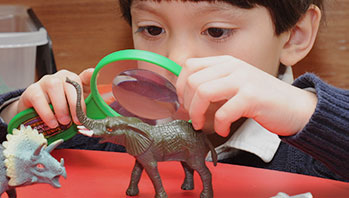- blocks
- number cards
- fewer
- first
- house
- more
- number words
- second
- third
MA Standards:
English Language Arts/Language/L.PK.MA.5.a Demonstrate understanding of concepts by sorting common objects into categories (e.g., sort objects by color, shape, or texture).
Mathematics/Counting and Cardinality/PK.CC.MA.4 Count many kinds of concrete objects and actions up to ten, using one-to-one correspondence, and accurately count as many as seven things in a scattered configuration.
Mathematics/Counting and Cardinality/PK.CC.MA.5 Use comparative language, such as more/less, equal to, to compare and describe collections of objects.
Head Start Outcomes:
Approaches to Learning/Persistence and Attentiveness The ability to begin and finish activities with persistence and attention.
PreK Learning Guidelines:
Mathematics/Number Sense 1 Listen to and say the names of numbers in meaningful contexts.
Mathematics/Patterns and Relations Sort, categorize, or classify objects by more than one attribute.
Number Houses

© Commonwealth of Massachusetts, Department of Early Education and Care (Jennifer Waddell photographer). All rights reserved.
Skill Focus: Counting, Hand-Eye Coordination, Vocabulary
Have children build a series of houses, each higher than the next. Have children build with different numbers of blocks. Say, How many blocks high is this house? How can you build a higher house? Ask children questions about their houses, such as, Which house has fewer blocks, the second house or the first house? Which house has the most blocks? How many more blocks than the first house does the third house have?
English Language Learners: Have children tell you how many blocks high their house is, first in their home language and then in English, using a complete sentence, such as “My house is <cinco, five> blocks high.”
